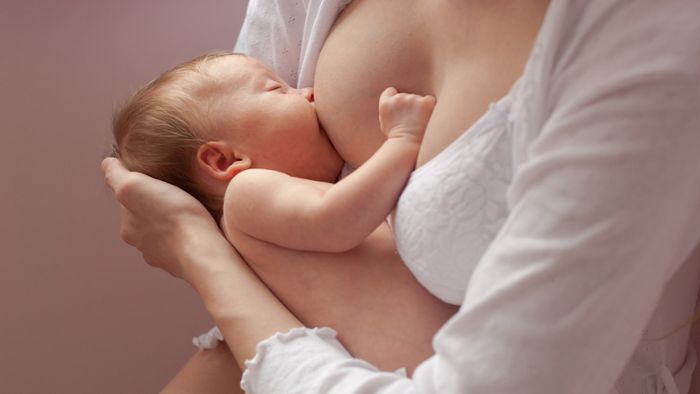Contractions are the body’s means of pushing the baby down the birth canal and out into the world. It is a complicated process that begins with messages from the baby’s brain to tell the mother’s body that it is time for the baby to come out into the world. These messages stimulate a hormonal reaction in the mother’s body causing contractions.
For the first time mothers the whole experience of pregnancy including contractions and giving birth to your child can be overwhelming. You might have already heard a lot about how the contractions will feel, and it is very expected for you to be a bit worried about the pain that you might have to bear during that span. However, always keep in mind that the experience of contractions is always personal for every woman and it varies depending on a range of factors, starting from the position of the baby in your womb to the strength of your labor and also how physically and emotionally prepared you are about it.
So, do not worry only by listening the stories of others, keep in mind that it is a natural process and the body of the mother does an excellent job by giving birth to the child through contractions. It is expected that contractions will be overwhelming, powerful and intense but as soon as your baby is born, all the pain and discomfort will be gone. The pain of contraction is often said to be different than normal pains, as it is not caused due to an infection or a problem in your body, rather it is a normal life process that makes the key of existence of living forms on the earth. So, when you are into labor, know for sure that it is the right thing happening to your body and hence there is nothing to be actually scared about it.
The uterus is a powerful muscular structure and during delivery it contracts and relaxes periodically to push your baby down through your cervix. As the muscle of the uterus will contract, your belly will feel hard and then as the muscles are relaxed it will become softer again. As the contraction and relaxation go on repeatedly it is most expected that you will have a wave-like feeling which will reach the maximum intensity before easing out completely.
Types of contractions
There are three types of contractions
- Practice contractions may or may not occur at any timeafter the middle pregnancy period.
- False contractions are irregular and normally stop after changing position. A few false contractions can lead to real contraction but they do not cause cervical dilation
- Real labor contractions intensify in any position –standing, sitting or lying down. They become intense, regular and frequent in course of time. These contractions can be accompanied with cramps, upset stomach or diarrhea. The pain is characterized by pain in the abdomen, lower back and upper thighs. There can also be a bloody show accompanied with rupturing of the membrane known as water breaking.
Timing Contractions is a useful way to find that labor is occurring and how much time is there for the baby to be born. Contractions are experienced by women near the end of pregnancy and all through the labor period till the baby are born. They come as periodic tightening and relaxing of uterine muscles.
Method to time contractions
- Recognize the contraction: Contractions give a different feeling to each woman. They are described by many women as a pain that starts from the back and moves towards the abdomen. The pain is mild at first and thenit builds to a peak and eventually subsides down. The stomach becomes rigid during contraction. The first few contractions at the beginning of labor last from 60-90 seconds and occur in 15-20 minutes. The duration decreases and the frequency increases as the delivery come closer.
- Timing Contractions: Frequency and duration of the contractions have to be noted to recognize the pattern of the contractions. Sometimes contractions last for less than a minute. Hence a precise timer is more useful. A note should be made as to when the contraction begins and when it ends. The duration between two contractions should also be noted. Timing of contractions must be started when the contractions start coming in a row. Just before labor the contraction s follow a set pattern.
- Knowing when the labor begins: It is necessary to follow the signs of labor. These signs include contractions that keep on intensifying in any position and they follow a set pattern. They increase in frequency and become more painful. Other physical signs of labor include the breaking of waters and the baby moving downwards to the cervix. There is dilation of the cervix and the bloody show.
- Knowing when to prepare for birth: It is time for delivery when there are strong contractions with duration of 45 seconds and occurring every 3-4 minutes.
How exactly are contractions like?
Contractions are felt like pressure wrapping around the uterus and the cervix. The stomach becomes firm and hard to the touch. Some women feel that that the stomach is making a tight fist. There is an uncomfortable tightening around the abdomen with little pain felt in some cases. It is felt like the baby stretching in the womb and putting pressure on the uterus. Every woman has different experiences of contractions.
Different experiences of contraction in different women
- Generally contraction is period type pains with some discomfort in the back and abdomen which become stronger and last longer. The pain comes and goes in waves in a set pattern.
- For some women contractions are like bad period pains. They are like cramps in the lower abdomen and back.
- Some feel just the tightening of the stomach with slight or no pain at all. This lasts for a few seconds or a minute.
- Many women feel the contraction as trapped wind or gas in the stomach.
- Contraction for some is felt with pain, some without pain, and some before bursting of waters while others experience contractions after bursting of the waters.
- Some women feel contractions like firm menstrual cramps that gradually intensify
Feeling of contraction at different stages of labor
The feeling of contraction is most expected to change depending on how far you are into the labor. At the beginning the contractions are most expected to feel like strong period pains, along with cramps and backache. For some women the pain is very intense from the very beginning. At the same time, there are others for whom the contraction at the beginning felt nothing more than heaviness in the lower part of their abdomen. For many, the contraction is first felt at the back and then it lowers down through the belly and then spreads across the uterus.
With the progress of the labor, the contractions become more powerful and intense as the breaks between two contractions are reduced. A double-peek contraction is often felt when the cervix of the mother is completely dilated. During double peak contraction you will feel the pain to reach its peak and then fade a bit, and then again hitting a peak before easing. At this point the first stage of labor ends and the second stage begin, when you start to push down your baby. The contractions during this stage can feel different and less painful than the contractions of the first stage. During the third stage, the placenta is detached from the wall of uterus, and this contraction is most expected to feel much less intense than the contractions of the previous stages.





